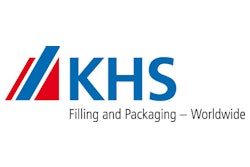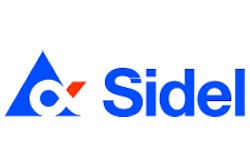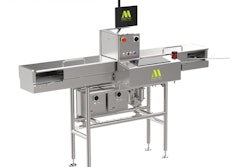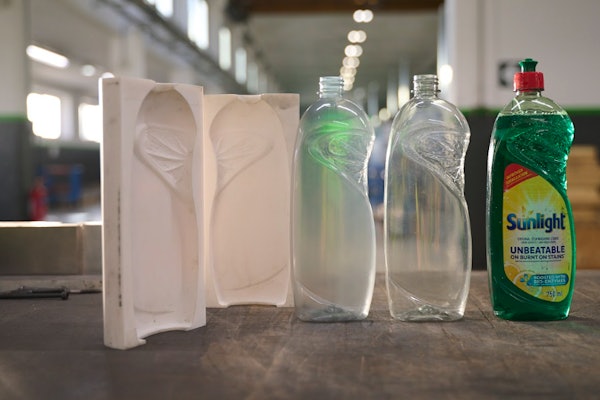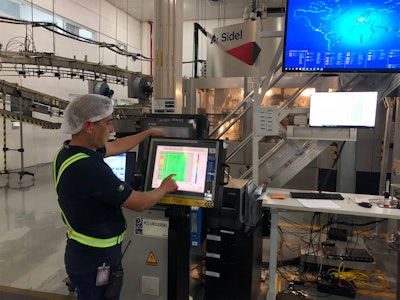
The PET bottles produced at the Coca-Cola FEMSA plant in Villahermosa, Mexico, in the Gulf Coast state of Tabasco, never touch a carton. Instead, they are filled immediately after blowing, then labeled, capped, palletized, and shrink-wrapped for shipment to big box and convenience stores throughout a sprawling four-state distribution area. This kind of integrated operation is a model of efficiency. But it leaves little margin for error. Production must be robust and nimble to meet the demands of schedules that change weekly. An on-premises agreement with converter ALPLA and the installation of Agr International’s Process Pilot® Automated Blowmolder Control systems in the blowing machines combine to optimize bottle output and quality, making sure Coca-Cola FEMSA’s stringent schedule and performance targets are met.
“Our customer has very clear expectations for line efficiency and availability, and it’s very important for us to keep within them,” remarks Helmut Hoedl, Head of ALPLA’s Injection Stretch Blow Moulding (ISBM) Business Unit. “We have no bottle inventory to rely on, so our lines must be up and running all the time.”
Coca-Cola FEMSA, the world’s largest franchise bottler of Coca-Cola products by volume, serves 290 million consumers from 48 locations in 10 countries across Latin America. Plastics processing specialist ALPLA, a family-owned company founded in Hard, Austria, in 1955, expanded into on-premises packaging 30 years ago. It now applies that model to 72 of its 178 sites worldwide.
The two giants struck their through-the-wall agreement for bottle-blowing at the Villahermosa plant in 2002, 10 years after it opened. It lets FEMSA concentrate on their core business of bottling, filling, and distribution while ALPLA takes care of preform injection and bottle blowing. The partnership is a solid match that offers several economic and environmental benefits. Being on site allows ALPLA to respond flexibly and quickly to changes in production. It also eliminates the expenses associated with packaging and transporting empty bottles, advancing sustainability goals for both companies while simultaneously reducing staff resources.
In the aftermath of a record flood in the fall of 2007, the collaboration went a step further as plant equipment was gradually replaced and upgraded. Two ALPLA lines were shifted to a blocked configuration, which combines blowing and filling functions in a single compact machine. Now operating on the FEMSA side of the building, one line is equipped with an InnoPET Blomax Series III stretch blow molding machine from KHS and the other with a KHS Series IV. The blocked configuration means there is no need for conveyers to transport freshly blown bottles through the wall to the filler. Centralized system controls streamline production, enhancing process stability and reducing the start-up and changeover times necessary with independent machines.
A strict mandate comes with these efficiencies. “In the blocked configuration there is product waste when the bottle is not up to spec,” Hoedl notes. “Normally this is not a problem because of ALPLA’s process control measures. We operate many lines in Mexico like this. But here in Villahermosa, with our special hot and humid climate, we need finer process control to produce the bottle performance necessary for the market.”
Agr formally entered the picture in late 2016. Even with ALPLA’s skilled and stable workforce, the region’s tropical monsoon climate was taking its toll on Villahermosa’s round-the-clock bottle production. In addition to a four-month-long summer rainy season, dramatic swings in temperature, often 20 degrees from day to night, created challenging conditions for the two KHS machines as well as for the standalone Sidel SBO 20 Universal Reheat Stretch Blow Molding machine operating on the ALPLA side. The environmental instability made it difficult to produce bottles with consistent material distribution and performance characteristics.
FEMSA’s varied product range compounded the situation. The converter’s KHS and Sidel lines turn out a complex mix of bottle shapes and sizes, five or six per machine, 17 in all. The blocked machines are dedicated to Coca-Cola brand carbonated beverages, primarily Coca-Cola Classic and Light, Sprite, and Fresca. Volume on the Sidel line is mostly 100% rPET bottles for water under the Ciel label.
To respond to the changing conditions, ALPLA had to use a series of different blowmolder settings for each shape to match daily temperature fluctuations and seasonal humidity levels. The multiple recipes required significant hands-on operation of the blowmolders, along with continuous, labor-intensive bottle testing, in order to manage wall thickness and material distribution. Still, out-of-spec resin distribution across the bottle sidewall continued to be a major concern.
The use of recycled material, up to 50% rPET, added another layer of complexity to bottle blowing on the two KHS machines. Hoedl explains that rPet exhibits more variations in resin, requiring additional recipe adjustments and closer scrutiny of production.
All these factors combined to have a negative effect on both production levels and bottle quality. Unstable non-conforming bottles caused jams as they ran through the downstream labelers, cappers, and conveyors. Line stoppages and subsequent restarts cut into valuable production time, making it a challenge to meet FEMSA’s output targets.
Post-production, bottle performance did not always match expectations. PET bottles that don’t meet wall thickness specifications are subject to environmental stress cracking, especially in the base. As the crack opens up into a seam, whether in storage, during transport, or on the retail shelf, undesirable consequences like leaks or bursts can result.
“Our high temperatures and humidity require bottles that conform to very narrow specifications,” says Hoedl. “If not, there will be problems in the market.”
The issue placed significant demands on the workforce: in order to better manage material distribution, operators were constantly fine-tuning the blowmolders, while employees were hired to take rounds of samples to the lab for inspection every half hour. On the Sidel line alone, the samples added up to roughly 600 bottles a day in lost production. The excess labor and resin costs were troubling. “We were doing normal measurements by hand, but the measuring frequency was not enough to maintain all bottles within spec,” says Hoedl.
ALPLA developed a multi-pronged strategy to improve production consistency, reduce labor intensity, and address the stress cracking issue. The converter introduced several measures to stabilize the interior physical environment, from installing air conditioning to conducting air quality tests to make sure there were no particles affecting operations.
As for the blowmolders themselves, Hoedl realized that gaining closer control of the blowing process was essential to meet FEMSA’s tight bottle specifications. Exploring equipment options, he found Agr’s Process Pilot automated control system offered a means to manage the blowmolding process to a level of precision not available through any other technology.
The Process Pilot system assures consistent bottle production without constant hands-on operator involvement. A powerful combination of measurement and control technology manages thickness distribution and automates blowmolder response to variables (shifts in material or temperature, for example) to maintain the resin distribution specified in each bottle recipe.
Pilot’s compact Profiler unit measures every bottle as it exits the mold. It generates a comprehensive thickness profile over the entire container sidewall, far exceeding the information that the ALPLA crew could glean from periodic manual section-weights. The data collected also presents a deeper look into blowmolder operation. Cavity and spindle data and performance information quickly identify blowmolder issues for proactive resolution. Comprehensive process trend reports are highly useful for overall line management and upcoming planning.
The system ties into blowmolder control functions associated with oven lamps, pre-blow pressure and start time, and preform set-point. Once a bottle process is set for the desired thickness and performance characteristics, Pilot takes over. Utilizing a proprietary learning function, it learns how modification to the basic machine control parameter affects material distribution. This becomes part of Pilot’s job/recipe for the particular bottle format. Agr’s proprietary algorithms instantaneously analyze the thickness measurements and automatically adjust the blowmolder control parameters. When even minute changes in material distribution are detected, Pilot tweaks the corresponding blowmolder function to redirect resin placement to maintain recipe targets throughout the production run, without the need for operator intervention.
Along with taking the guesswork out of the blowing process, such exacting control has helped ALPLA get a handle on stress cracking, meeting FEMSA expectations for bottle performance in the market.
Altogether ALPLA produces 425 million PET bottles a year at the Villahermosa site. The converter operates a total of five blowing lines: two using the KHS machines, one with the Sidel, and two other blowmolders that feed a single high-speed filler. In meetings between production heads of both companies, FEMSA assigns the lines for each week’s production schedule, and line employees keep in regular communication with their counterparts on the other side.
As part of its agreement, ALPLA also manufacturers the vast majority of preforms on site. Four Husky injection molding machines produce a total of 23 different preform shapes. In keeping with the plant’s high sustainability goals, the preforms contain up to 50 percent rPET, with those for the Ciel water brand using 100 percent recycled resin.
Of all ALPLA production, volume is highest on the two KHS blocked lines, where the output is predominantly 2-L and 3-L bottles.
“The 3-L lines run at 19,000 bottles per hour, typically over two and a half days,” says Hoedl. Weighing 54.5 grams, these bottles also present “the biggest issues.” The large quantity of filled product makes it imperative that container sidewalls conform perfectly to specifications, not just on leaving the plant but also throughout their 90-day shelf life.
ALPLA installed the Process Pilot system in the KHS and Sidel blowmolders in November 2017, in conjunction with other plant upgrades. Since then, the converter has seen an impressive reduction in stress cracking, up to 80 percent, Hoedl estimates. Already after just a few months of operation, thickness data for the container base had confirmed notable improvement in the consistency of resin distribution.
ALPLA has also been able to slash the number of recipes for each bottle format, from three or four per shape to just one each. This accomplishment not only reduces complexity for the operator; it also removes a major potential stumbling block to line efficiency.
“A 75 percent reduction in the number of recipes is important, because the more recipes you have, the greater the chance of error,” explains Hoedl. “The wrong recipe delays start-up of the filling line.”
A similarly meaningful metric is the well-documented decrease in the need for operator attention to blowmolder controls. “Before we had the Process Pilot, we had to make many process adjustments during a shift,” says Hoedl. “That has been reduced dramatically.” To illustrate, he compares a high of 240 daily adjustments in the month before the system was installed to a post-system low of 15 three months later. “For every 10 we had to make before, today we only have to make one,” says Hoedl.
A particularly gratifying outcome for Hoedl is the reduced frequency of his Villahermosa visits. Responsible for 27 ALPLA facilities throughout Mexico, he was spending a disproportionate amount of time at this plant, working closely with the local team to resolve the operational issues. “Before Pilot, I had to visit the plant at least two times a month. Now, after Pilot, I make only five trips per year.”
There are many variables that can affect bottle performance, Hoedl points out. So when it comes to things like stress cracking, it’s difficult to point the finger at any one thing. “What we do know,” he says, “is that if we control wall thickness distribution with the Process Pilot, our chances of having a big problem are low.”
Villahermosa’s improved performance has earned it a spot among five ALPLA plants worldwide recognized for general operational excellence. The company’s recently introduced NEXT program covers areas like customer service, product quality, and optimum costs. The inclusion reflects the problem-solving experience and progress the site has made and is a badge of pride. “We had already started working with operational excellence tools—maintenance, process control, 5S standards for lean production. It’s been very good for morale,” Hoedl concludes.



